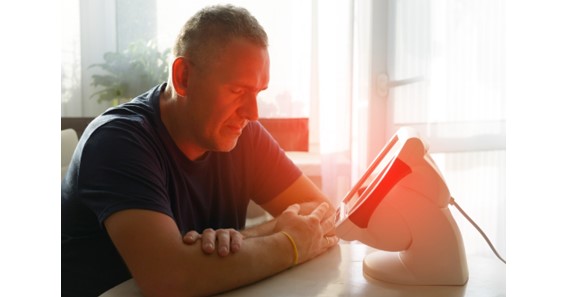Light therapy, also known as phototherapy, is a treatment method that uses specific wavelengths of light to treat various conditions. It has been used for many years to treat conditions such as seasonal affective disorder, acne, and skin conditions. However, many people still wonder whether light therapy actually works or if it’s just a gimmick. In this article, we will take a closer look at light therapy and examine the evidence to determine whether it is an effective treatment option.
What is Light Therapy?
Light therapy involves the use of specific wavelengths of light to treat various conditions. The light used in this therapy is typically produced by a light box or lamp and is usually a bright white light. The light is delivered through the eyes or directly onto the skin, depending on the condition being treated.
How Does Light Therapy Work?
The exact mechanism of action for light therapy is not fully understood. However, it is believed that exposure to certain wavelengths of light can stimulate the production of neurotransmitters and hormones that regulate mood, sleep, and other bodily functions.
For example, exposure to bright light in the morning has been shown to help regulate the body’s circadian rhythm, which can improve sleep and reduce symptoms of seasonal affective disorder. Similarly, blue light has been shown to suppress the production of melatonin, which can help reset the body’s internal clock and improve sleep.
Types of Light Therapy
There are several different types of light therapy, including:
- Bright Light Therapy: This type of therapy involves exposure to bright white light, usually in the morning, to help regulate the body’s circadian rhythm.
- Blue Light Therapy: There are many benefits of blue light therapy. This type of therapy uses blue light to treat skin conditions such as acne and psoriasis.
- Red Light Therapy: This type of therapy uses red light through red light therapy beds or any device to promote healing and reduce inflammation in the skin.
- Infrared Light Therapy: This type of therapy uses infrared light to treat pain and promote healing in the muscles and joints.
Does Light Therapy Work?
The effectiveness of light therapy depends on the condition being treated and the type of light therapy used. Let’s take a closer look at some of the conditions that light therapy is commonly used to treat and the evidence supporting its use.
Seasonal Affective Disorder (SAD)
Seasonal affective disorder (SAD) is a type of depression that typically occurs during the winter months when there is less natural light. Bright light therapy has been shown to be an effective treatment option for SAD. A 2015 systematic review and meta-analysis of 20 randomized controlled trials found that bright light therapy was effective in reducing symptoms of SAD compared to placebo.
Acne
Blue light therapy has been shown to be an effective treatment option for mild to moderate acne. A 2016 systematic review and meta-analysis of 14 randomized controlled trials found that blue light therapy was effective in reducing the number of acne lesions compared to placebo.
Psoriasis
Blue light therapy has also been shown to be an effective treatment option for psoriasis. A 2018 systematic review and meta-analysis of 22 randomized controlled trials found that blue light therapy was effective in reducing the severity of psoriasis compared to placebo.
Pain and Inflammation
Red and infrared light therapy have been shown to be effective in reducing pain and inflammation in the muscles and joints. A 2014 systematic review and meta-analysis of 27 randomized controlled trials found that red and infrared light therapy were effective in reducing pain and improving function in patients with osteoarthritis.
Are There Any Risks to Light Therapy?
Light therapy is generally considered safe when used as directed. However, there are some potential risks and side effects to be aware of, including:
- Eye Strain: Bright light therapy can cause eye strain, headaches, and other discomforts. It is important to follow the manufacturer’s instructions and take breaks when using light therapy.
- Skin Irritation: Some people may experience skin irritation or rash from exposure to certain types of light therapy, such as blue light therapy for acne or psoriasis.
- Mania: In rare cases, bright light therapy can trigger manic episodes in people with bipolar disorder. It is important to talk to a healthcare provider before starting light therapy if you have a history of bipolar disorder or other mood disorders.
Conclusion
Overall, the evidence suggests that Celluma’s LED light therapy can be an effective treatment option for certain conditions, such as seasonal affective disorder, acne, psoriasis, and pain and inflammation in the muscles and joints. However, it is important to use light therapy as directed and talk to a healthcare provider before starting treatment.
While light therapy is generally considered safe, there are some potential risks and side effects to be aware of. If you experience any discomfort or side effects from light therapy, stop using it and talk to your healthcare provider.
In conclusion, light therapy is a scientifically-backed treatment option that has been shown to be effective for certain conditions. If you are considering light therapy as a treatment option, talk to your healthcare provider to determine if it is right for you.






